A cup with colors blending through the brushstrokes, a sprawling
Grecian city, and graceful ballerina: these were the subjects of three
paintings displayed by 18-year-old Wasan Halaseh at
Zara Center Gallery in Amman on Saturday.
اضافة اعلان
“I express what I
love by painting, and my inner feelings motivate me to paint,” Halaseh said.

Meanwhile, a much
younger budding artist was also displaying her works at the gallery:
seven-year-old Karen Saraf presented four pieces of art composed with felt-tip
markers and watercolors. “I feel happy when I draw,” said Saraf, explaining
that her favorite subjects are cacti and people.
The event on
Saturday was a joint show combining the artworks of 20 young students of
Jordanian artist
Juman Nimri in the annual Studio Beit Al Weibdeh exhibit, and
those of an older group of 11 adults who were once Nimri’s students, in a
second exhibit titled “Tawassul”.
“I feel like I’m
creating a new group of emerging artists,” Nimri told
Jordan News.
Keeping in touch
The joint exhibition aimed to reflect the preservation of art through generations,
Nimri said. Through observing their predecessors who grew up and now take part
in the Tawassul exhibition, the Studio Beit Al Weibdeh children can learn how
to continue their pursuit of art as they grow.
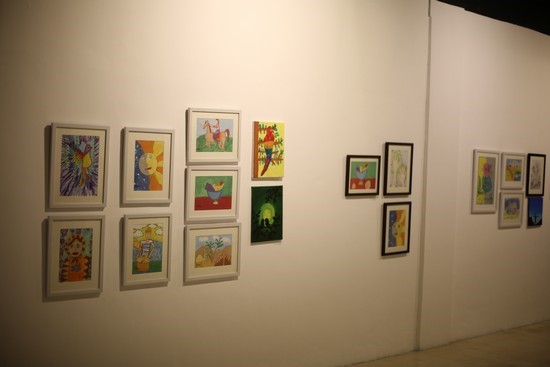
The artists
presenting their works in the Tawassul exhibit, in its second year, were
students at Studio Beit Al Weibdeh in 2008, Nimri said. When they grew up and
began their university studies, they stopped attending the art studio, but kept
in touch with Nimri. Together, the teacher and her students came up with the
idea of establishing an ongoing connection by creating the exhibit.
“Tawassul is how my
students keep in touch with me,” the artist said.
“It started when my
students wanted to improve their artistic talents,” Nimri explained. “As their
talents develop, they are able to continue showing their artwork in this
separate exhibit connected to the Studio Beit Al Weibdeh exhibit.”
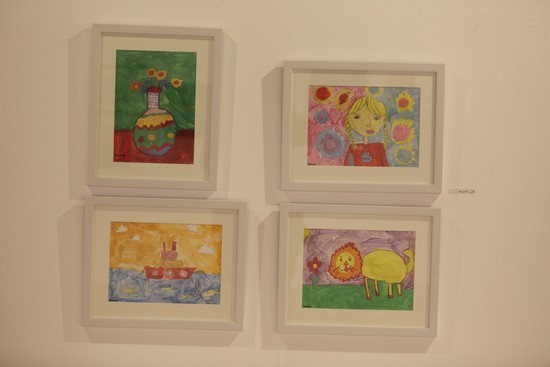
“The importance of
the exhibition is the continuity,” she said.
Budding artists
Jordan News interviewed the young troupe of artists at Studio Beit Al
Weibdeh about their exhibit.
Reine Afram, 9,
started creating art when she was five years old. She uses wooden colored
pencils and watercolors. Afram displayed nine pieces of art at the Studio Beit
Al Weibdeh exhibition.
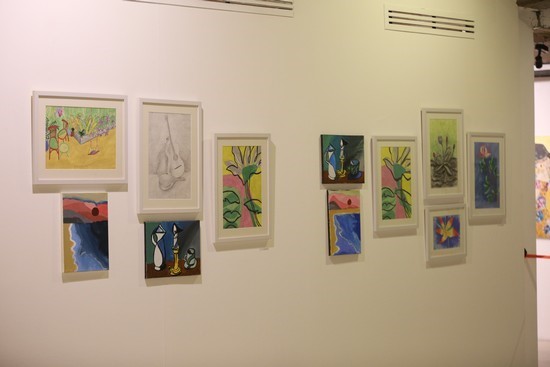
“I was so overjoyed
when I first started painting,” Afram said. “I love to draw plants.”
Ten-year-old
Daniel Nimri started painting when he was nine. He uses acrylic paints, and he
displayed three paintings showing nature scenes.
“I have
painted before, but this time was the best,” he said.
‘Invaluable lessons’
From the Tawassul exhibit,
Jordan News spoke with Jude Zawaideh, 21, a
Jordanian fine artist who spends her time between Amman and Florida, while
studying for a business of arts degree at Ringling College in Sarasota,
Florida.
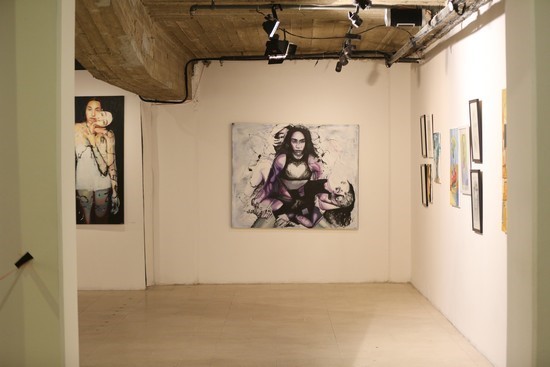
Zawaideh started
drawing with Studio Beit Al Weibdeh in 2011 when she was 10 years old, but she
had already been painting since the age of two. “I joined Studio Beit Al
Weibdeh to develop the potential I had, and I learned invaluable lessons along
the way,” she said.
By delving into her
own experiences, Zawaideh explores the diversity of reality and human awareness
in mysterious artistic compositions. Her most recent series concentrated on the
connection between the self and the body as it relates to aging.
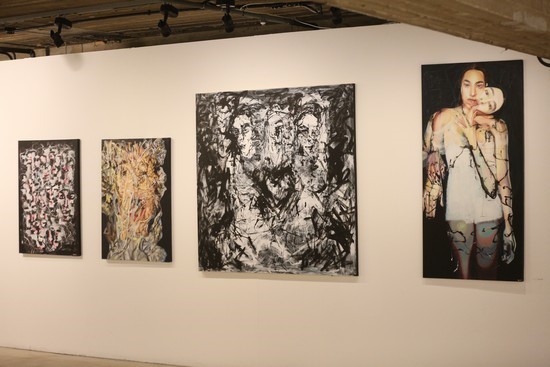
“As humans we are
ever-changing, we evolve and grow through time. Throughout my self-portraits, I
have been able to explore these versions of myself that have existed through
time,” Zawaideh explained.
The young artist
displayed four artworks in the Tawassul exhibit. Her chosen medium is oil
paint.
“It’s a learning process, and I enjoy the character of the medium as it
enhances my intentionality with my work. I also tend to work on larger-scale
canvases to take up physical space in my viewers’ reality,” she said.
 Time and place
Time and place
Maria Farkouh, 25, has been painting since she was 12 years old. She
created her two exhibit pieces using acrylic on canvas. The first piece, she
explained, attempts to portray the relationship of the sun and time. “Time is
linked to movement, and time goes on while the sun moves,” Farkouh said.
Her second work of
art shows the beauty of the moon and its nearness to earth. “We also see it as
large and think that it is larger than the sun because of its proximity, but it
is the opposite,” she reflected.
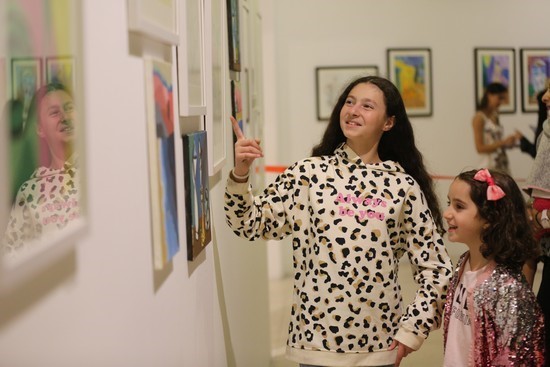
Celine Nino, 25,
who works in the sustainable development field, started painting when she was
10. In the Tawassul exhibit, she displayed two artworks using different
mediums: acrylic and photography. She explained to
Jordan News that she focuses
her work on her personality, origins, and identity.
Both of Nino’s pieces depicted
Amman Citadel, one of
the city’s oldest landmarks. “I wanted to reflect Amman as it is, with its
beautiful and distinctive diversity,” she said.
In one of the artworks, a photograph of Amman Citadel, she overlaid the image
with poetry about home. “The homeland is not just a piece of land, it is made
up of people and communities affected by many circumstances,” she explained.
Seasons of life
Tara Abboud, 21, displayed one piece of art, an acrylic recreation of
Gustave Klimt’s painting The Kiss.
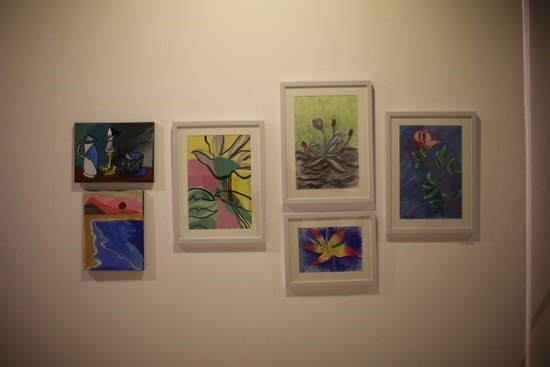
“I saw the painting
The Kiss when I was in Vienna; it is like a landmark there. I wanted to have
one like it, so I recreated it,” Abboud explained.
Nawal Faouri
recently picked up painting for the first time, and the Tawassul exhibition is
her first opportunity to display her works to the public. Nimri, she reflected,
has supported her in her artistic process by teaching her drawing techniques.
“Juman… not
only teaches drawing, but also gives attention to the psychological aspect,
personality, and reactions of the person,” the artist said.
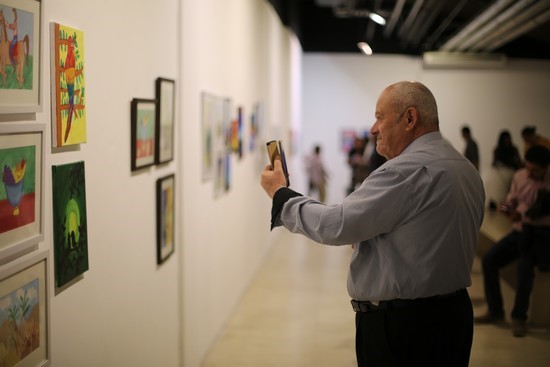
Faouri used two
mediums, pencil and acrylic, and displayed four artworks at the event.
Jordan News also
spoke with Rama Sabanekh, 24, who has been painting since she was 12 years old.
At the exhibit, she displayed four artworks as a series using canvas and
acrylic. These pieces represent the goodbye moments she experienced with her
friends when she left to study in another city. During these “sensitive and
emotional” moments, she took pictures with her friends, and later turned these
pictures into paintings.
“These artworks
represent the closure of a season of my life,” Sabanekh said. “I wanted to keep
these moments as something tangible, so I froze them in these paintings.”
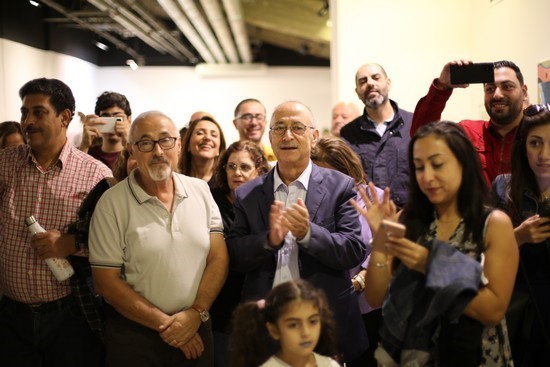
The Tawassul
artists started painting and drawing as young children, she said, reflecting on
her development as an artist. “But after the transition of age and my life, I
came to see art differently as the works became more mature and the choice of
topics and ideas changed.”
“There is a deeper appreciation and understanding for art,
and a desire for continuity.”
Read more Culture and Arts
Jordan News



